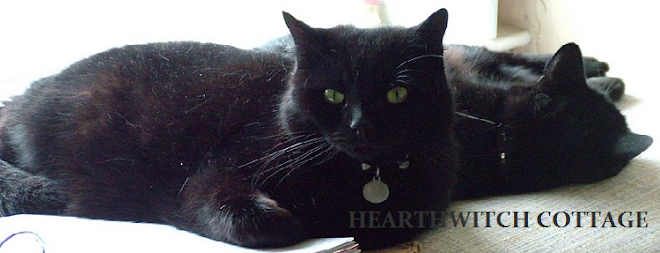With Beltane almost upon us here in the Northern Hemisphere, it is clear that Summer is around the corner.
Here in England we have been blessed by some astonishingly warm, sunny weather of late and everywhere you look you can see how fertile and full of life the Earth is.
Cultivated Spanish Bluebells
Bluebells are perennial bulb plants which flower yearly around May-time. For me they will always be associated with woodland walks near my mother's house around this time of year - when the floor beneath the trees becomes carpeted with vibrant blues.
Although the plant has some medicinal uses, the bulbs themselves are highly toxic. This toxicity led to their use as a source of glue for bookbinding - silverfish which would commonly attack the books would be discouraged by this toxicity.

Spanish bluebells in the wild
In myth and legend, tales tell of the bells summoning faerie folk and any human hearing the summoning of the bells, or wandering into a ring of bluebells, being doomed to die. Some superstitions state that wearing a wreath made of bluebell flowers would compel the wearer to speak only the truth; others say that if you successfully turn a flower inside out without tearing it, you would win the one you love.
Native Bluebells - image courtesy of Really Wild Flowers
Although prevalent in much of Britain and Ireland, bluebells are scarce in the rest of Europe and do not grow wild in the rest of the world. Globally, they are considered a threatened species, particularly as loss of habitat and people pulling up the wild bulbs for their gardens has resulted in a huge decline in the last 50 years. In Northern Ireland, native bluebells are now a protected species.
To complicate matters further for the native bluebell, the Spanish bluebell has been widely planted here in Britain, resulting in the hybridisation of the species. Wild hybrid bluebells are becoming widespread, as can be seen in the second image, resulting in the further decline of the less-vigorous native species, which cannot compete. Spanish bluebells and hybrids have bells produced from all sides of the stem which stands upright; native bluebells, as seen in the final image, have bells on only one side of a drooping stem.



3 musings:
Beautiful!!!
Tall fringed bluebells and hare bells grow wild here in July - but for now, we are still getting some snow!
Wishing you a lovely weekend,
Zuzu
Such glorious bluebells! Thank you for sharing its history and lore. And I love the memories they hold for you. :) Theresa
LOve those bluebells! Blessed Be!
Post a Comment
Thank you for taking the time to share your thoughts. I truly love to hear your contributions.